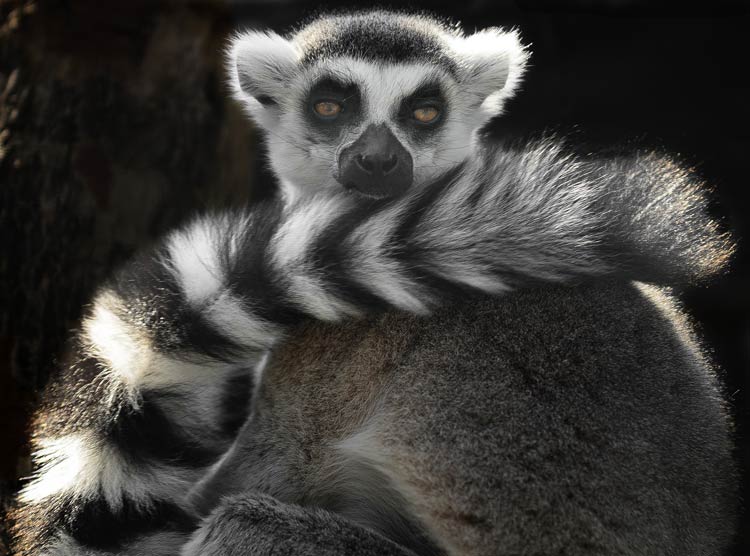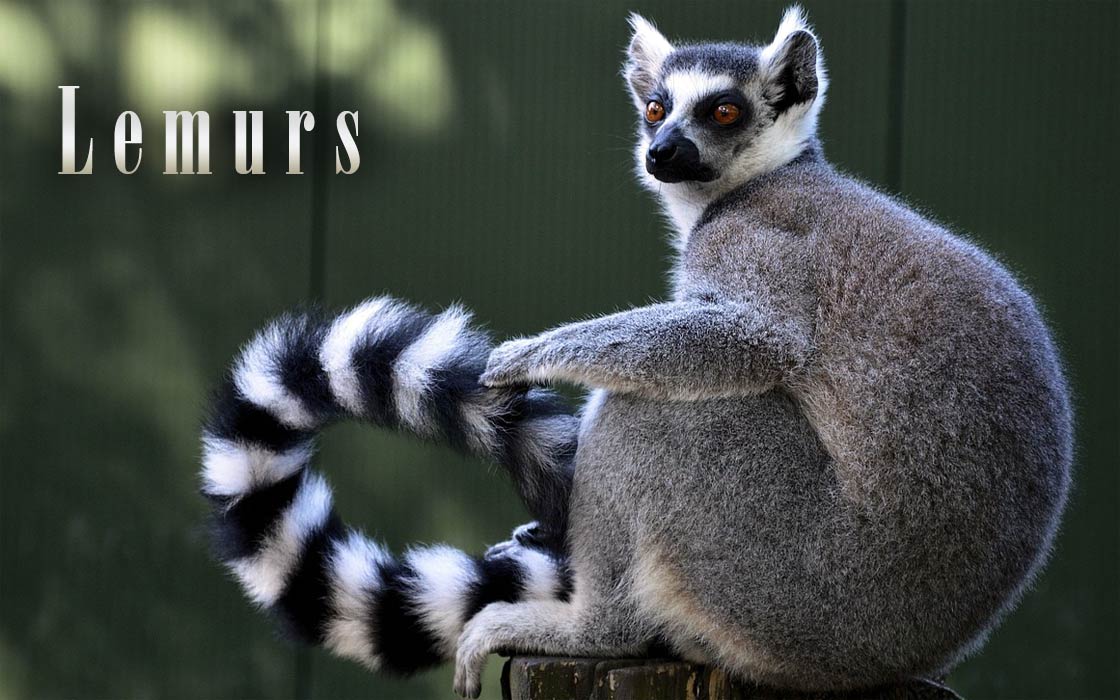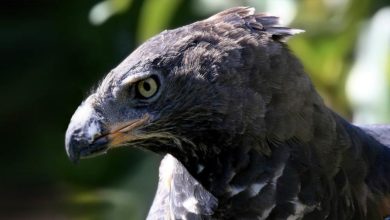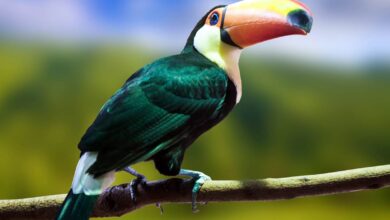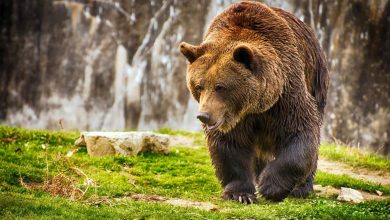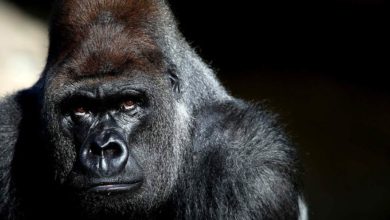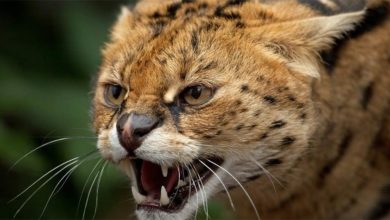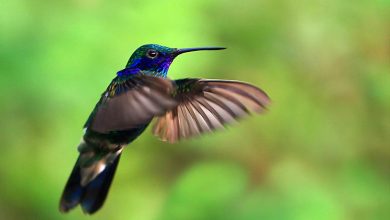Madagascar’s Treasured Primates: The Fascinating World of Lemurs
Lemurs, the enchanting primates of Madagascar, have long captivated the hearts and minds of scientists and the public alike. With their big, expressive eyes, lively personalities, and unique adaptations, these creatures offer a fascinating glimpse into the diversity of life on our planet. But beyond their undeniable charm, lemurs are also incredibly important for the health of Madagascar’s forests, and their continued existence is crucial for the well-being of countless other species. Join us on a journey into the world of lemurs, as we explore their origins, behavior, and the challenges they face in the modern world.
Lemurs are a diverse group of primates that are native to the island of Madagascar. They come in a wide range of shapes and sizes, from the tiny mouse lemur (Microcebus murinus) which measures around 10 cm (4 inches) in length and weighs only about 30 grams (1 oz), to the larger indri lemur (Indri indri), which can weigh up to 9 kg (20 lbs) and measure over 70 cm (28 inches) in length. One of the most distinctive features of lemurs is their eyes, which are large and round, and often have a striking color.
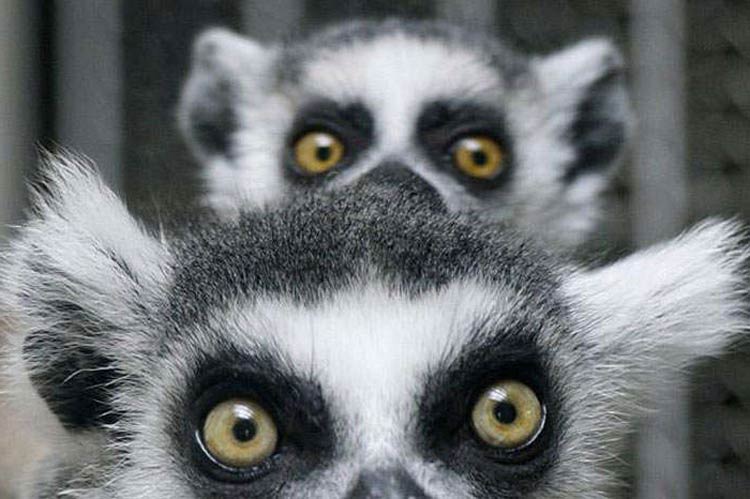
From acrobatic leaping to tree-dwelling agility
Lemurs are also known for their unique adaptations. Some species have long, slender fingers that are perfect for grabbing insects, while others have sharp claws that help them climb trees. Some lemurs have developed the ability to leap incredible distances, while others have a keen sense of smell that helps them find food.
Despite their many differences, all lemurs share a common ancestor that lived on Madagascar millions of years ago. Since then, they have evolved into a wide range of different species, each with its own unique characteristics. Today, lemurs are threatened by habitat loss, hunting, and other human activities. But with conservation efforts, we can help ensure that these amazing primates continue to thrive for generations to come.
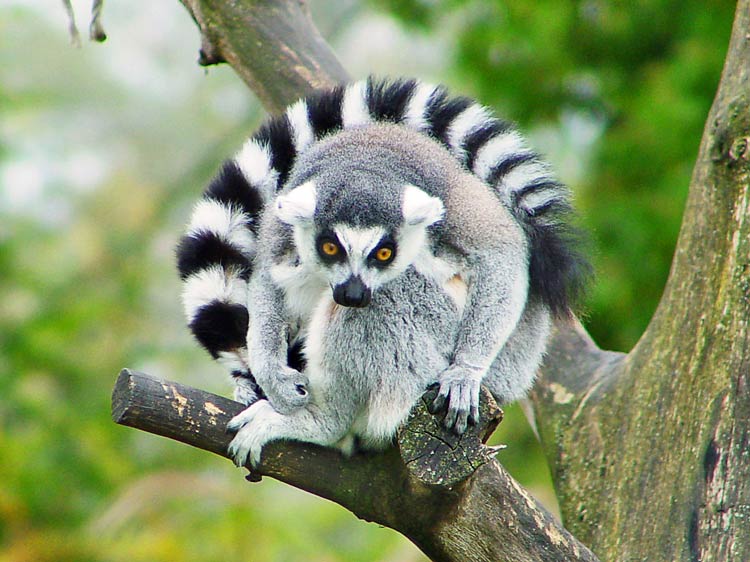
Taxonomy
Lemurs belong to the taxonomic infraorder Lemuriformes, which includes all of the living lemur species, as well as the recently extinct subfossil lemurs. Within Lemuriformes, there are five families:
- Lemuridae
The family of true lemurs, which includes the ring-tailed lemur (Lemur catta) and the red ruffed lemur (Varecia rubra), among others. - Lepilemuridae
The family of sportive lemurs, which includes the Milne-Edwards’ sportive lemur (Lepilemur edwardsi) and the weasel sportive lemur (Lepilemur mustelinus), among others. - Indriidae
The family of indriids, which includes the indri lemur (Indri indri) and the sifakas (genus Propithecus), among others. - Cheirogaleidae
The family of dwarf and mouse lemurs, which includes the gray mouse lemur (Microcebus murinus) and the Coquerel’s dwarf lemur (Cheirogaleus medius), among others. - Daubentoniidae
The family of aye-ayes, which includes only one species, the aye-aye (Daubentonia madagascariensis).
These families are further divided into numerous genera and species, each with its own unique characteristics and traits. The taxonomy of lemurs has been a subject of ongoing study and debate, with new species being discovered and others being reclassified or reassigned to different groups based on genetic and morphological data. Despite this complexity, the taxonomy of lemurs remains a fascinating and important field of study for scientists and conservationists alike.
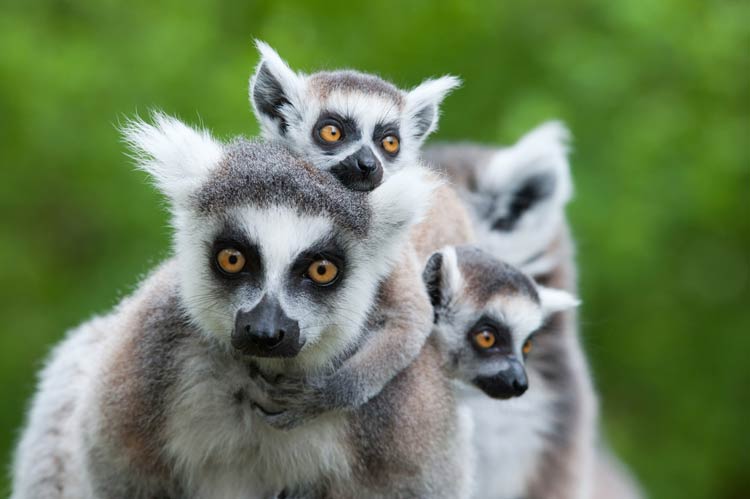
Scientific classification
- Kingdom: Animalia
- Phylum: Chordata
- Class: Mammalia
- Order: Primates
- Suborder: Strepsirrhini
- Infraorder: Lemuriformes
- Superfamily: Lemuroidea
- Families
- Cheirogaleidae
- Daubentoniidae
- Indriidae
- Lemuridae
- Lepilemuridae
- †Archaeolemuridae
- †Megaladapidae
- †Palaeopropithecidae

Basic Facts About Lemurs
- Lemurs are a group of primates that are native to the island of Madagascar, located off the southeastern coast of Africa.
- There are over 100 species of lemurs, ranging in size from the tiny mouse lemur, which weighs less than an ounce, to the larger indri lemur, which can weigh up to 20 pounds.
- Lemurs have a wide range of adaptations, including long fingers for grasping insects, sharp claws for climbing trees, and powerful legs for leaping through the forest.
- Most lemurs are arboreal, meaning they spend the majority of their time in trees, though some species are also known to come down to the ground to forage for food.
- Lemurs are diurnal, meaning they are most active during the day, and sleep at night in nests or tree holes.
- Many species of lemurs are highly social, living in groups that can range in size from just a few individuals to over 20.
- Lemurs are herbivores, with a diet that varies depending on the species and their environment. Some lemurs feed primarily on fruit, while others eat leaves, bark, or insects.
- Lemurs are important for the health of Madagascar’s forests, as they help to disperse seeds and maintain the diversity of plant life.
- Lemurs are threatened by habitat loss, hunting, and other human activities, and many species are considered endangered or critically endangered. Conservation efforts are underway to protect lemurs and their habitats for future generations.

Etymology
The word “lemur” comes from the Latin term “lemures,” which means “ghosts” or “spirits.” This name was given to the animals by Carl Linnaeus, the father of modern taxonomy, due to their nocturnal habits and ghostly vocalizations. In Malagasy, the language spoken in Madagascar, lemurs are known as “maky” or “varika,” depending on the species.
The Malagasy people have a complex relationship with lemurs, viewing them as both important cultural symbols and potential sources of food or medicinal remedies. Today, lemurs are considered one of the most iconic and unique groups of animals in the world, and continue to capture the imagination of scientists and nature enthusiasts alike.
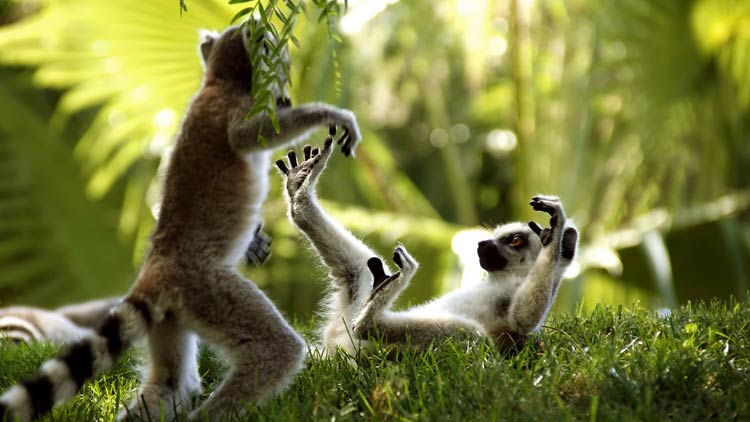
Evolutionary history
Lemurs have a unique evolutionary history that is closely tied to the island of Madagascar, where they are found today. Scientists believe that lemurs are descended from a group of primates that colonized Madagascar from mainland Africa around 60-70 million years ago, during a period when the island was still connected to the continent. These early primates gave rise to a diverse array of lemurs, including both diurnal and nocturnal species with a range of different adaptations for life in the trees.
Over millions of years, the lemurs of Madagascar evolved in isolation from other primates, undergoing a process of adaptive radiation that allowed them to fill a variety of ecological niches. Some lemurs became highly specialized for eating fruit, while others evolved to feed on insects or leaves. Still others developed unique adaptations, such as the aye-aye’s specialized teeth for gnawing through tree bark, or the sifakas’ elongated hindlimbs for leaping through the forest.
The evolutionary history of lemurs has been shaped by a range of environmental factors, including changing climates, geological events, and the arrival of humans on the island. Many lemurs went extinct as a result of habitat loss and hunting by human settlers, while others continue to face threats today from habitat destruction and fragmentation, climate change, and other human activities. Despite these challenges, lemurs remain one of the most fascinating and important groups of primates in the world, and ongoing research continues to shed new light on their evolutionary history and conservation needs.

Distribution and habitat
Lemurs are found exclusively on the island of Madagascar, located off the southeastern coast of Africa. Madagascar is one of the world’s most biologically diverse regions, home to a wide range of unique plants and animals, many of which are found nowhere else on earth.
Within Madagascar, lemurs occupy a diverse array of habitats, from rainforests and dry deciduous forests to spiny forests and montane habitats. Some species are adapted for life in the trees, spending their days leaping through the forest canopy in search of food and shelter. Others are more terrestrial, spending more time on the ground and using their powerful legs and sharp claws to navigate rocky terrain.
Despite their adaptability, many species of lemurs are facing significant threats to their habitats, particularly as a result of deforestation and other human activities. Forests in Madagascar are being cleared at an alarming rate to make way for agriculture, logging, and mining, putting many species of lemurs at risk of extinction. Conservation efforts are underway to protect lemurs and their habitats, including the establishment of protected areas and the development of sustainable land-use practices that can help to balance the needs of people and wildlife.
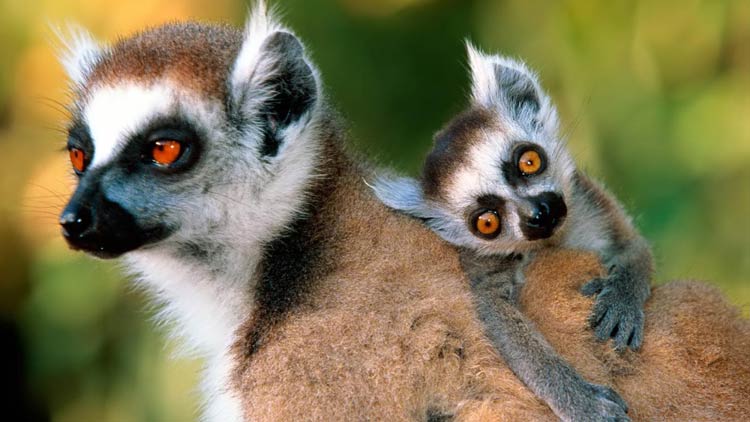
Diversity
Lemurs are one of the most diverse groups of primates in the world, with over 100 recognized species and subspecies. These animals come in a wide range of sizes, shapes, and colors, with adaptations that reflect their unique habitats and ecological niches.
Some of the most iconic and well-known species of lemurs include the ring-tailed lemur (Lemur catta), with its distinctive black and white tail and social group dynamics, and the sifaka lemurs (Propithecus spp.), with their long, powerful hindlimbs that allow them to leap through the forest canopy. Other species, such as the aye-aye (Daubentonia madagascariensis), have unique adaptations for life in the trees, including specialized teeth for gnawing through tree bark in search of insects.
One of the factors that contributes to the diversity of lemurs is the fact that they have evolved in isolation on the island of Madagascar, without competition from other primates. This has allowed them to fill a wide range of ecological niches and develop unique adaptations that are not seen in other primates.
Unfortunately, many species of lemurs are facing significant threats to their survival, primarily as a result of habitat loss and fragmentation. As a result, many species are considered endangered or critically endangered, and conservation efforts are urgently needed to protect these unique and important animals for future generations.
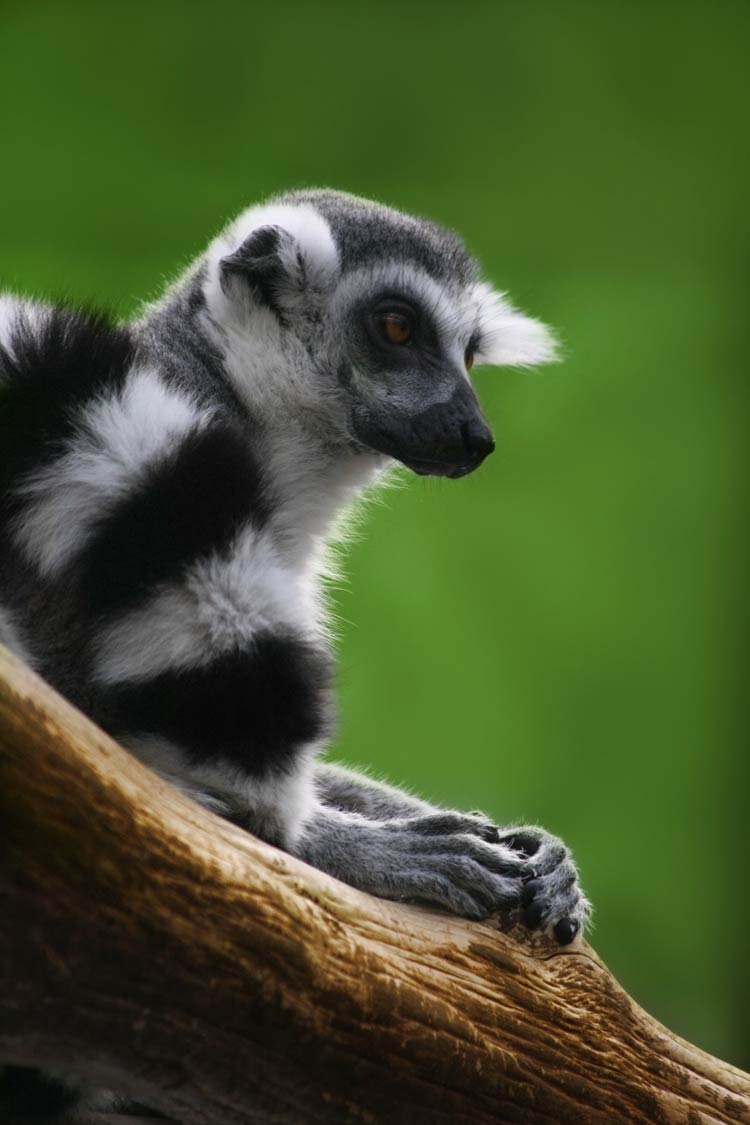
Characteristics
Appearance
Lemurs come in a wide range of shapes, sizes, and colors, with adaptations that reflect their unique habitats and ecological niches. However, all lemurs share some common characteristics that help to identify them as a distinct group of primates.
One of the most distinctive features of lemurs is their elongated, furry tails, which can be used for balance and communication. Lemurs also have large, round eyes and sensitive noses, which help them to navigate their environments and locate food. Most lemurs have pointed snouts and sharp teeth, which are adapted for their omnivorous diets.
In terms of size, lemurs range from the tiny mouse lemurs, which weigh only a few ounces and can fit in the palm of a hand, to the large, robust indri (Indri indri), which can weigh up to 20 pounds and stand over two feet tall. The fur of lemurs can also vary widely, from the short, sleek coats of the ring-tailed lemurs to the shaggy, woolly coats of the aye-aye.
One of the reasons that lemurs are so diverse in appearance is that they have evolved in isolation on the island of Madagascar, without competition from other primates. This has allowed them to fill a wide range of ecological niches and develop unique adaptations that are not seen in other primates. Despite the challenges facing lemurs today, they remain one of the most fascinating and important groups of animals in the world, and ongoing research continues to shed new light on their appearance, behavior, and conservation needs.

Size
Lemurs come in a wide range of sizes, from some of the smallest primates in the world to larger species that can weigh over 20 pounds.
The smallest lemurs
The smallest lemurs are the mouse lemurs (genus Microcebus), which are found throughout Madagascar and typically weigh between 1 and 2 ounces (30-60 grams) and are only about 3 to 4 inches (7-10 cm) long.
Other small lemurs include the dwarf lemurs (genus Cheirogaleus), which weigh between 3 and 6 ounces (85-170 grams) and are about 6 to 8 inches (15-20 cm) long.
The largest lemurs
Larger lemurs include the ring-tailed lemur (Lemur catta), which can weigh up to 7 pounds (3.2 kg) and grow up to 18 inches (45 cm) long, and the indri (Indri indri), which can weigh up to 20 pounds (9 kg) and stand over 2 feet (60 cm) tall.
It’s worth noting that the size of lemurs can vary depending on the species, with some exhibiting significant sexual dimorphism (differences in size and appearance between males and females) and others showing relatively little variation. Additionally, the size of lemurs can be influenced by factors such as habitat, diet, and geographic location, with some populations of the same species being larger or smaller than others.
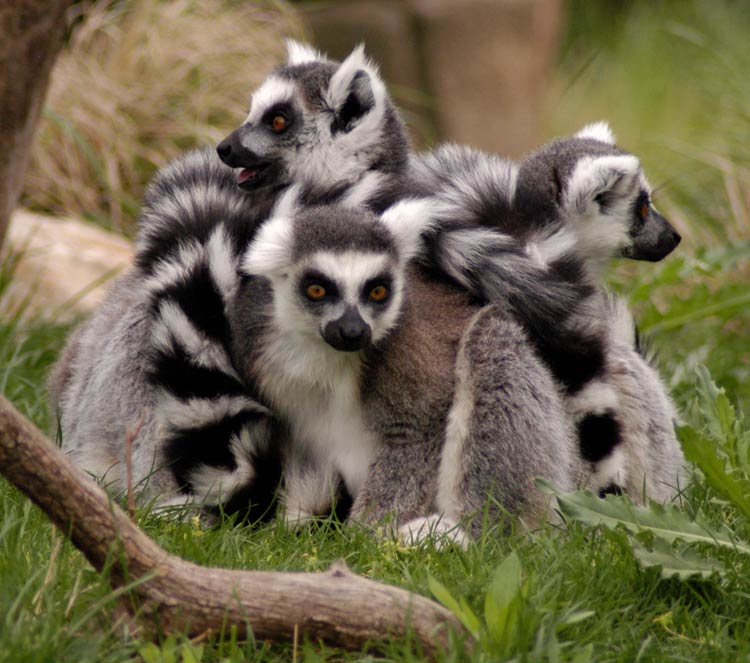
Anatomy and physiology
Lemurs are primates and share many anatomical and physiological features with other members of their order. However, as a result of their unique evolutionary history on the island of Madagascar, lemurs have also developed some distinctive characteristics that set them apart from other primates.
One of the most notable differences between lemurs and other primates is their dental formula, which is different from that of most other primates. Most lemurs have a dental formula of 2.1.3.3, which means they have two incisors, one canine, three premolars, and three molars on each side of their upper and lower jaws. This is different from the dental formula of most other primates, which have a dental formula of 2.1.2.3. This difference reflects the unique dietary adaptations of lemurs, many of which have evolved to eat tough, fibrous plant materials.
Another distinctive feature of lemurs is their elongated and flexible spine, which allows them to move quickly and gracefully through the trees. Many species of lemurs have also evolved specialized adaptations for life in the trees, including long, powerful hindlimbs for leaping and grasping hands and feet for clinging to branches.
Lemurs also have highly developed senses, including large, forward-facing eyes that provide excellent depth perception and a keen sense of smell that is used to locate food and communicate with other members of their social groups.
In terms of physiology, lemurs have a number of adaptations that allow them to survive in the varied and often challenging environments of Madagascar. For example, many species of lemurs are able to enter a state of torpor during periods of food scarcity, which allows them to conserve energy and survive until more abundant food sources become available.
Overall, the anatomy and physiology of lemurs reflects their unique evolutionary history and the ecological niches they have evolved to fill. Despite facing significant threats to their survival, these fascinating animals continue to fascinate scientists and inspire conservation efforts around the world.
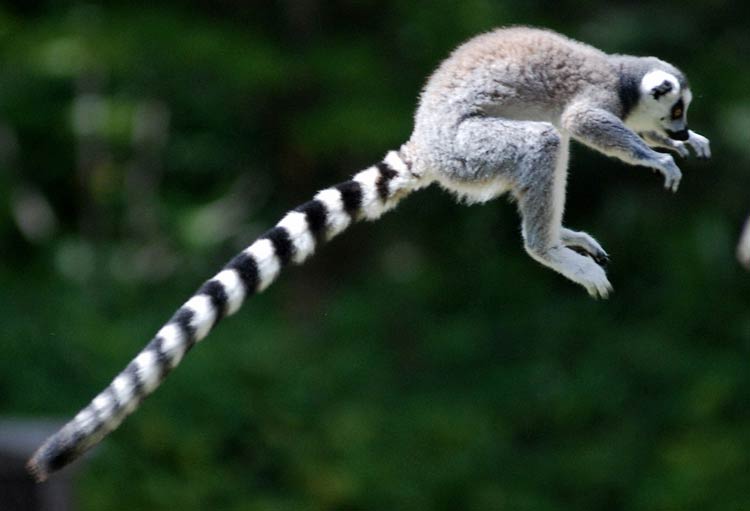
Senses
Lemurs have highly developed senses, which are essential for their survival in the diverse and often challenging habitats of Madagascar. Here are some of the key senses of lemurs:
- Vision
Lemurs have large, forward-facing eyes that provide excellent depth perception and color vision, which helps them to navigate the complex three-dimensional environment of the forest. Some lemurs, such as the nocturnal aye-aye, have highly specialized eyes that are adapted for low-light conditions. - Smell
Lemurs have an acute sense of smell, which is used for a variety of purposes, including finding food, detecting predators, and communicating with other members of their social group. Many species of lemurs have a scent gland located on their wrist or neck, which they use to mark their territory and communicate with other lemurs. - Hearing
Lemurs have well-developed ears that allow them to detect a wide range of sounds, including those of other lemurs, predators, and potential food sources. Many species of lemurs also have specialized vocalizations that they use to communicate with each other, such as the distinctive calls of the indri. - Touch
Lemurs have sensitive fingers and toes with opposable thumbs, which allow them to grasp and manipulate objects in their environment. They also use touch to communicate with each other, such as grooming each other’s fur to establish social bonds.
Overall, the senses of lemurs are well-adapted to their unique environment and lifestyle, and play a crucial role in their ability to survive and thrive in the wild.
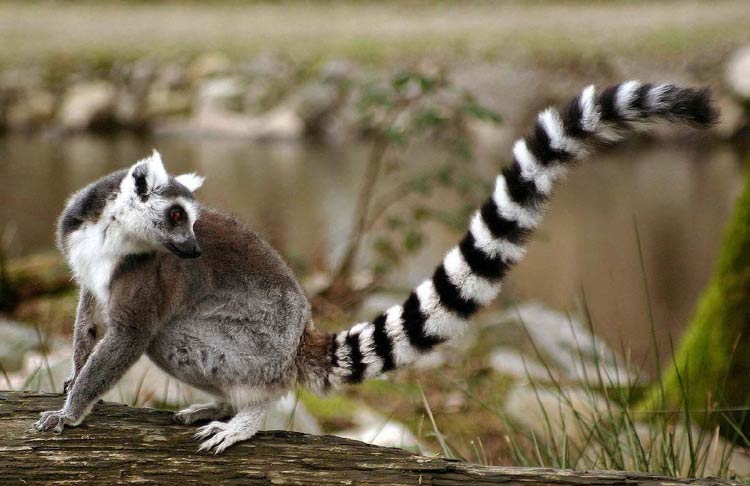
Metabolism
Lemurs have a range of metabolic adaptations that allow them to survive in the challenging environments of Madagascar. These adaptations reflect the fact that many lemurs live in habitats that are highly variable and often subject to seasonal fluctuations in food availability.
One of the most important metabolic adaptations of lemurs is their ability to enter a state of torpor during periods of food scarcity. Torpor is a state of reduced metabolic activity, during which the body’s core temperature drops and the animal conserves energy. Many species of lemurs are able to enter torpor for periods of several hours to several days, which allows them to survive during times when food is scarce.
Another metabolic adaptation of lemurs is their ability to digest tough, fibrous plant materials. Many species of lemurs have evolved specialized adaptations, such as elongated digestive tracts and large caeca, which allow them to break down and extract nutrients from tough plant fibers. This is essential for their survival, as much of their diet consists of leaves, bark, and other plant materials that are difficult to digest.
In addition, many species of lemurs have a slow metabolic rate, which allows them to conserve energy during times of food scarcity. This metabolic adaptation is also reflected in their relatively low body temperatures compared to other primates, which helps to reduce their energy requirements.
Overall, the metabolism of lemurs reflects their unique evolutionary history and the ecological niches they have evolved to fill. These adaptations have allowed lemurs to survive and thrive in the challenging environments of Madagascar, but they also make them vulnerable to habitat loss and other threats to their survival.
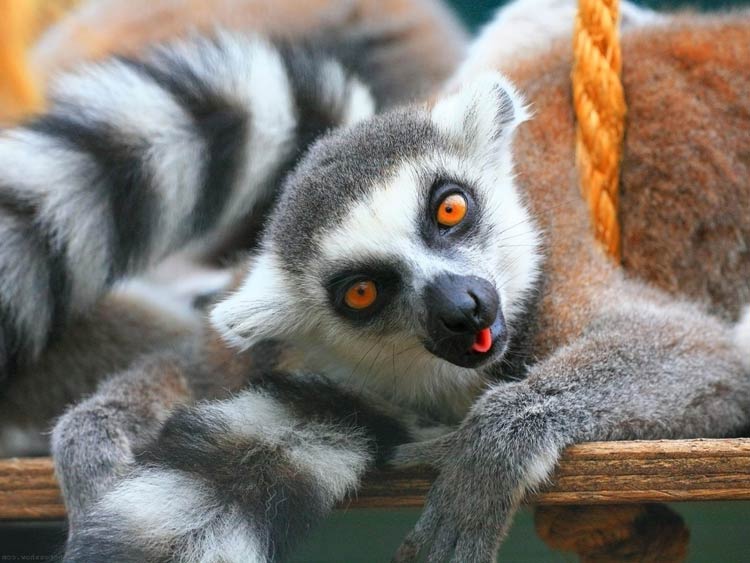
Behavior, Lifestyle and ecology
Lemurs have a diverse range of behaviors, lifestyles, and ecological roles, reflecting the wide variety of habitats and niches they occupy on Madagascar. Here are some of the key aspects of lemur behavior, lifestyle, and ecology:
- Social behavior
Many species of lemurs are highly social, living in groups that range in size from just a few individuals to over 100. Social behavior is particularly important for lemurs, as it helps them to defend territory, find food, and avoid predators. Social groups are typically led by a dominant male or female, and lemurs use a variety of vocalizations, gestures, and scent markings to communicate with each other. - Feeding behavior
Lemurs have a wide variety of feeding behaviors, ranging from the leaf-eating sifakas to the insect-eating aye-ayes. Many species of lemurs have specialized adaptations that allow them to feed on particular types of food, such as the elongated fingers of the aye-aye, which are used to extract insects from tree bark. In addition, many lemurs engage in seed dispersal, which plays an important role in maintaining the ecological balance of Madagascar’s forests. - Nocturnal behavior
Many species of lemurs are nocturnal, meaning that they are active at night and sleep during the day. This is thought to be an adaptation to avoid competition with diurnal (daytime) animals, as well as to reduce the risk of predation by diurnal birds of prey. Nocturnal lemurs typically have specialized adaptations for low-light conditions, such as large eyes and enhanced senses of smell and hearing. - Ecological roles
Lemurs play a crucial role in the ecology of Madagascar, as they are the only native primates on the island and have evolved to fill a wide variety of ecological niches. Many species of lemurs are important seed dispersers, helping to maintain the biodiversity of Madagascar’s forests. In addition, lemurs are an important food source for many of Madagascar’s predators, such as fossas and birds of prey.
The behavior, lifestyle, and ecology of lemurs reflect the unique evolutionary history of Madagascar and the complex interactions between its many species and ecosystems. Despite facing numerous threats, lemurs continue to play a vital role in maintaining the ecological balance of this unique and fragile island.
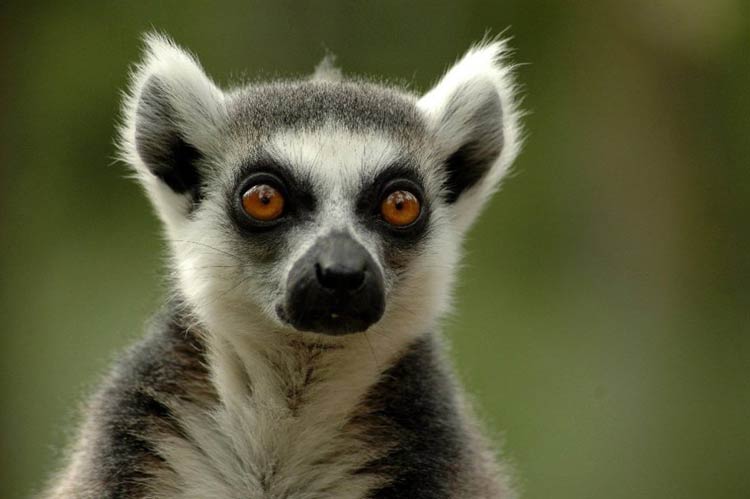
Social systems
The social systems of lemurs vary greatly depending on the species, with some living in solitary or pair-bonded groups, while others form large social groups. Here are some of the different social systems observed in lemurs:
- Solitary
Some species of lemurs, such as the sportive lemurs, are primarily solitary, with individuals living alone in their own territories. Solitary lemurs tend to be more territorial and aggressive towards other members of their species. - Pair-bonded
Other species of lemurs, such as the mouse lemurs, form monogamous pair-bonds, with males and females mating for life and sharing a territory. Pair-bonded lemurs tend to be less aggressive towards other members of their species, as they are focused on defending their territory and offspring. - Multi-male / multi-female
Many species of lemurs live in large social groups that include multiple males and females. These groups tend to be hierarchical, with a dominant male or female leading the group and other individuals occupying subordinate positions. Members of these groups engage in social grooming and other forms of social interaction to establish and maintain social bonds. - Female-dominant
In some species, such as the ring-tailed lemurs, females are dominant over males and occupy the top position in the social hierarchy. Female-dominant lemurs tend to live in multi-female groups, with males occupying subordinate positions.
The social systems of lemurs reflect the complex interactions between their ecology, evolutionary history, and social behavior. Understanding these social systems is crucial for understanding the behavior, ecology, and conservation of lemurs in the wild.
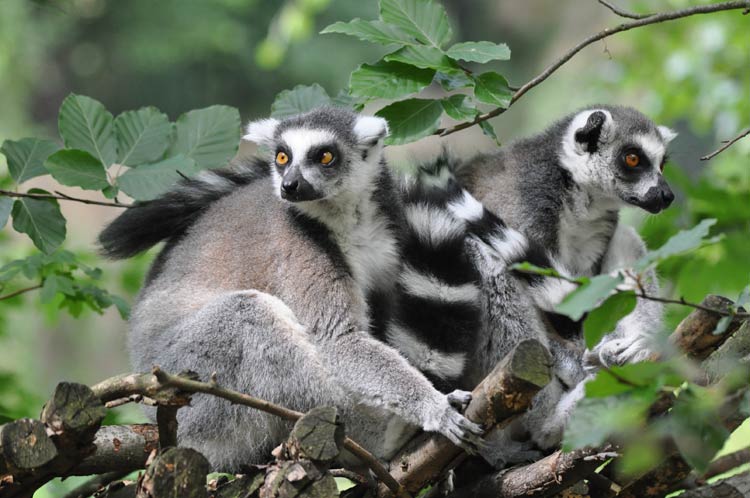
Activity patterns of lemurs
The activity patterns of lemurs vary greatly depending on the species, with some being primarily active during the day (diurnal), others being primarily active at night (nocturnal), and still others being active during both the day and night (cathemeral). Here are some examples of the activity patterns observed in lemurs:
- Diurnal lemurs
Many species of lemurs, such as the ring-tailed lemurs and sifakas, are diurnal, meaning that they are active during the day and sleep at night. Diurnal lemurs tend to have large eyes and color vision, which allows them to see well in bright daylight. They also tend to be more social than nocturnal lemurs, as they have more opportunities for social interaction during the day. - Nocturnal lemurs
Many species of lemurs, such as the mouse lemurs and aye-ayes, are nocturnal, meaning that they are active at night and sleep during the day. Nocturnal lemurs tend to have large eyes and enhanced senses of smell and hearing, which allows them to navigate in low-light conditions and locate food sources such as insects. - Cathemeral lemurs
Some species of lemurs, such as the brown lemurs and bamboo lemurs, are cathemeral, meaning that they are active both during the day and at night. Cathemeral lemurs tend to be more adaptable to changing environmental conditions, as they can adjust their activity patterns depending on the availability of food and other resources.
The activity patterns of lemurs are shaped by a variety of factors, including their ecological niche, predation risk, and social behavior. Understanding these activity patterns is crucial for understanding the behavior, ecology, and conservation of lemurs in the wild.
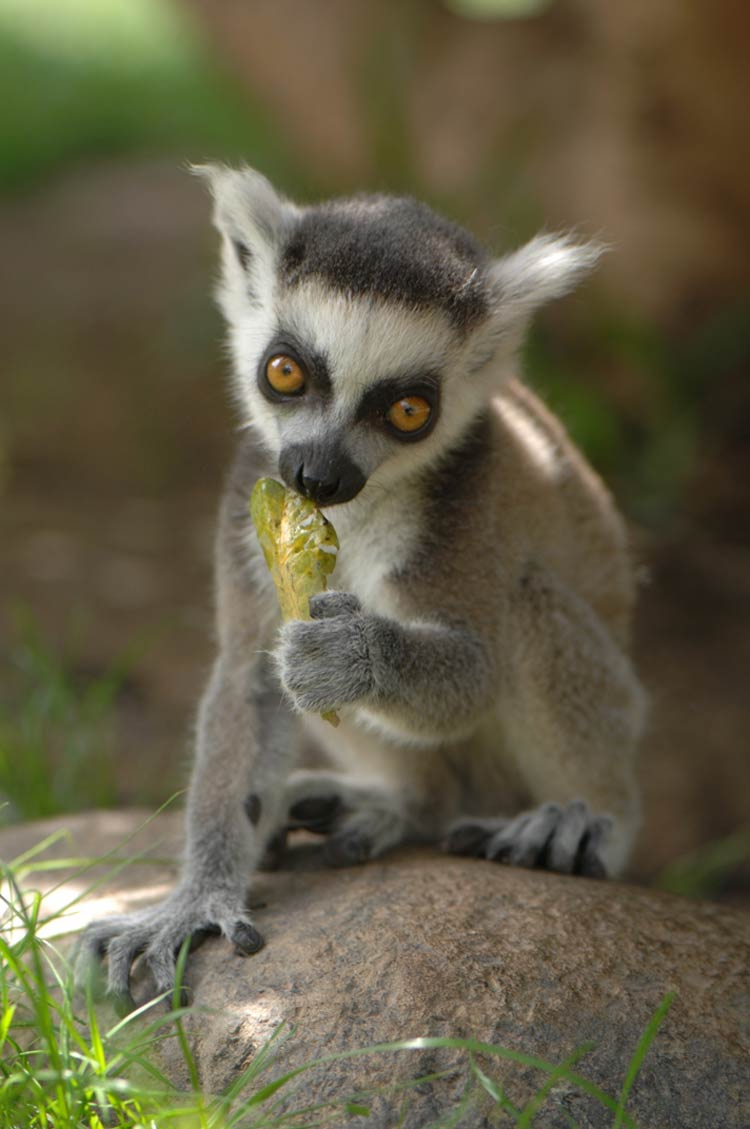
Locomotion of lemurs
Lemurs are known for their unique and specialized locomotion, which varies depending on their body size and habitat. Here are some of the main types of locomotion observed in lemurs:
- Vertical clinging and leaping
This type of locomotion is commonly seen in smaller lemurs such as the mouse lemurs, dwarf lemurs, and sifakas. It involves using their long and powerful hind limbs to leap between trees and branches, while gripping onto vertical surfaces with their hands and feet. - Quadrupedalism
Many lemurs, including the ring-tailed lemurs and brown lemurs, use quadrupedalism as their primary mode of locomotion. This involves walking or running on all four limbs, with the tail often used for balance and communication. - Brachiation
Brachiation, or arm-swinging, is seen in some species of lemurs such as the indri and the woolly lemurs. It involves using their long and powerful arms to swing between branches, similar to how gibbons and some primates move through the canopy. - Arboreal sprinting
Some larger lemurs such as the Verreaux’s sifaka and the red ruffed lemur are known to use arboreal sprinting, which involves running along branches and leaping between trees at high speeds.
The locomotion of lemurs is adapted to their arboreal lifestyle, allowing them to move efficiently through the forest canopy in search of food and resources. Their specialized locomotion also makes them unique and fascinating animals to observe and study in the wild.
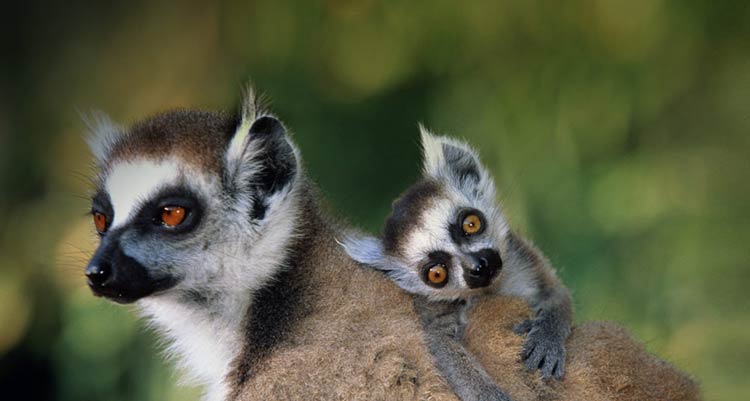
Lemur communication
Lemurs communicate with each other through a variety of vocalizations, body language, and scent marking. Here are some of the main types of communication observed in lemurs:
- Vocalizations
Lemurs use a wide range of vocalizations to communicate with each other, including calls, songs, and alarm cries. These vocalizations can convey a variety of information, such as warning of predators, marking territory, and maintaining social bonds. - Body language
Lemurs also use body language to communicate with each other, such as facial expressions, posture, and gestures. For example, some species of lemurs use a “stink fight” where they rub their tails and anogenital region with scent glands, and then wave their tails towards their opponent as a form of dominance display. - Scent marking
Lemurs have scent glands on various parts of their bodies, such as their wrists, ankles, and anogenital region, which they use to mark their territory and communicate with other lemurs. They may also use urine and feces to mark their territory and leave messages for other lemurs. - Visual displays
Some species of lemurs use visual displays to communicate with each other, such as the bright and distinctive coloration seen in the sifakas and the black and white ruffed lemurs. These visual displays may help individuals identify each other and maintain social bonds.
Lemurs use a combination of vocalizations, body language, scent marking, and visual displays to communicate with each other and maintain social relationships within their groups. Understanding these communication methods is important for studying the behavior, ecology, and conservation of lemurs in the wild.

Cognitive abilities and tool use
Lemurs are known to exhibit a variety of cognitive abilities, including problem-solving, social learning, and tool use.
Studies have shown that some species of lemurs are able to solve complex problems and demonstrate a degree of problem-solving ability similar to that seen in some primates. For example, ring-tailed lemurs have been observed using sticks to extract food from crevices, while brown lemurs have been observed using leaves to make a protective sheath around their fingers while feeding on prickly plants.
In addition to problem-solving, lemurs also exhibit social learning, which allows them to acquire new behaviors and skills by observing and imitating others. For example, researchers have documented instances of lemurs observing and copying the foraging behavior of other individuals within their social group.
Finally, some species of lemurs have been observed using tools in the wild. For example, the black lemur has been documented using stick tools to extract insects from tree bark. Similarly, the red-fronted lemur has been observed using leaves to scoop water from tree holes.
Overall, while lemurs may not exhibit the same degree of cognitive abilities and tool use as some primates, they demonstrate a remarkable level of intelligence and adaptability. Studying these abilities in lemurs can provide valuable insights into the evolution of cognition and tool use in primates and other animals.
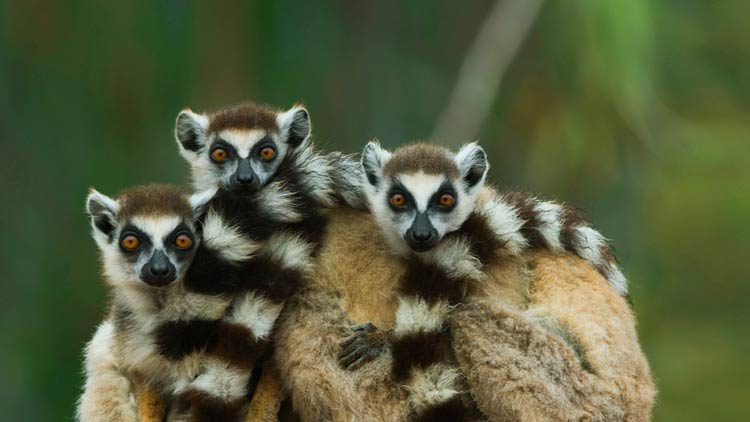
Predator avoidance
Lemurs have several strategies for avoiding predators in the wild. Here are some of the most common predator avoidance behaviors observed in lemurs:
- Alarm calls
When lemurs detect the presence of a predator, they may emit loud alarm calls to alert others in their group. These calls can be used to warn others of danger and coordinate group responses. - Group living
Many species of lemurs live in groups, which can provide safety in numbers. Larger groups can be more effective at detecting predators and coordinating group responses to avoid them. - Camouflage
Some species of lemurs have evolved to blend in with their surroundings, making them harder to detect by predators. For example, the mouse lemur has fur that matches the color of tree bark, making it difficult for predators to spot. - Arboreal lifestyles
Lemurs are primarily arboreal, spending most of their time in trees, which can provide protection from predators that are unable to climb. In addition, some lemurs, such as the sifakas, are able to leap long distances between trees, making it harder for predators to catch them. - Nocturnal activity
Many species of lemurs are active at night, when many of their predators are less active. This can help reduce the risk of predation and increase their chances of survival.
Lemurs have a variety of strategies for avoiding predators in the wild, which can help them stay safe and survive in their often-dangerous environments.

Diet
Lemurs are known to have a diverse diet that varies depending on their species and habitat. Most lemurs are herbivorous, feeding on a variety of fruits, leaves, flowers, and bark. Some species may also eat insects, small vertebrates, and other animal matter.
One of the most important sources of food for lemurs is fruit. Many species of lemurs are frugivorous, meaning they primarily feed on fruit. Fruits provide an important source of energy and nutrients, and are often a seasonal food source. When fruit is scarce, lemurs may switch to feeding on leaves and bark.
Some species of lemurs, such as the aye-aye, have specialized diets. The aye-aye, for example, feeds primarily on the larvae of wood-boring insects, which it extracts from tree bark using its specialized middle finger.
Lemurs have unique adaptations that allow them to extract nutrients from their food sources. For example, some species have specialized teeth and digestive systems that allow them to efficiently extract nutrients from tough leaves and bark. In addition, many species of lemurs have elongated intestines that are adapted for digesting fibrous plant material.
Overall, lemurs have a diverse and adaptable diet that allows them to survive in a variety of habitats. Understanding the dietary habits of lemurs is important for understanding their ecology and the role they play in their ecosystems.
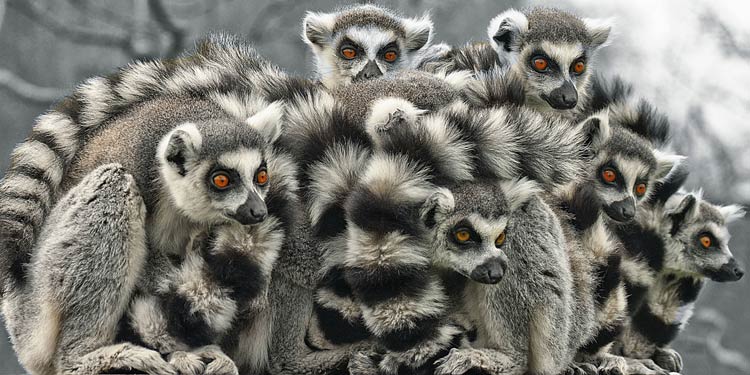
Reproduction and parenting
Lemurs have a variety of reproductive strategies, with some species exhibiting monogamous or polygamous mating systems, while others are solitary breeders. Here are some of the most common reproductive behaviors and parenting strategies observed in lemurs:
- Seasonal breeding
Many species of lemurs have a specific breeding season, which is often tied to the availability of food. During breeding season, males may become more territorial and aggressive in their attempts to mate. - Sexual dimorphism
In many lemur species, males are larger and have more exaggerated physical characteristics, such as longer canines or more brightly colored fur. These traits are thought to play a role in male-male competition for mates. - Gestation and birth
Lemurs have a relatively long gestation period compared to other primates, with most species carrying their young for between four and six months. After birth, lemurs will typically nurse their young for several months before gradually weaning them. - Infant care
Lemurs are known for their attentive parenting behavior. Mothers will often carry their young on their stomachs or backs, and will groom them frequently to keep them clean and healthy. In addition, older siblings or other members of the group may help care for and protect the young. - Delayed sexual maturity
Many species of lemurs have a relatively long period of juvenile development, and may not reach sexual maturity for several years. This extended period of development is thought to be a result of the challenges of surviving in their often-challenging environments.
Lemurs have a variety of reproductive and parenting strategies that allow them to successfully rear their young in the wild. Understanding these behaviors is important for understanding the ecology and social dynamics of lemur populations.
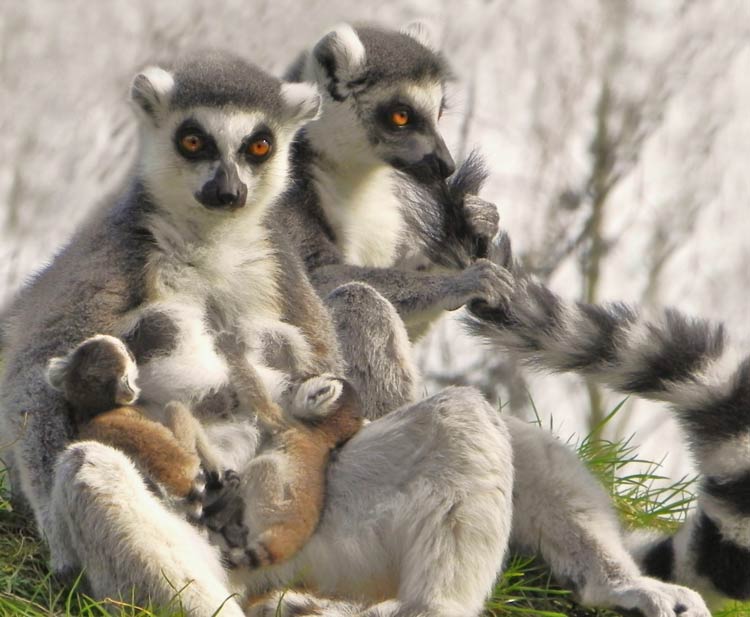
Predators and Threats
Lemurs face a number of threats from predators and human activities. Here are some of the most common predators and threats faced by lemurs:
- Natural predators
Lemurs are preyed upon by a variety of natural predators, including birds of prey, snakes, and carnivorous mammals such as fossas and Madagascar civets. - Habitat loss and fragmentation
One of the biggest threats to lemur populations is habitat loss and fragmentation. Deforestation, slash-and-burn agriculture, and mining have all contributed to the destruction of lemur habitat, leading to population declines and increased vulnerability to predators. - Hunting
Some species of lemurs are hunted for food or for use in traditional medicine. Hunting can have a significant impact on lemur populations, particularly in areas where hunting is unregulated or illegal. - Climate change
Climate change is predicted to have a significant impact on lemur populations, particularly those living in the highlands. Changes in temperature and precipitation patterns could alter the distribution of plant species that lemurs rely on for food and shelter. - Invasive species
The introduction of non-native species to Madagascar has also had a significant impact on lemur populations. Rats, cats, and dogs are all known to prey on lemurs, while non-native plant species can outcompete native plants and disrupt lemur habitats.
Lemurs face a number of threats from both natural and human causes. Conservation efforts aimed at protecting lemur habitat, regulating hunting, and controlling invasive species are essential for ensuring the survival of these unique primates.
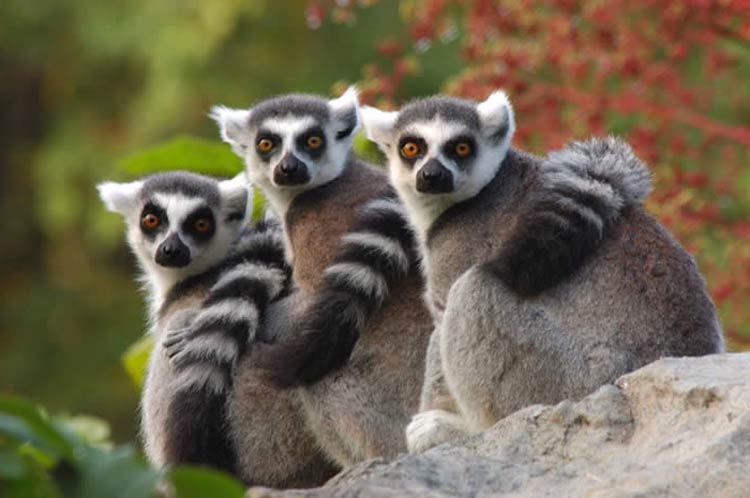
Interactions with humans
Lemurs have a complex relationship with humans. On the one hand, lemurs are an important cultural and ecological symbol in Madagascar, and many Malagasy people value and protect these animals. On the other hand, human activities such as deforestation, hunting, and the introduction of invasive species have all contributed to the decline of lemur populations. Here are some of the most common ways in which humans interact with lemurs:
- Ecotourism
Ecotourism is a major industry in Madagascar, and lemurs are one of the country’s most popular attractions. While ecotourism can provide economic benefits to local communities, it can also have negative impacts on lemur populations if not managed carefully. - Hunting
In some areas of Madagascar, lemurs are hunted for food or for use in traditional medicine. Hunting can have a significant impact on lemur populations, particularly if it is unregulated or illegal. - Pet trade
Some species of lemurs are popular in the pet trade, particularly in other parts of the world. The capture and transport of lemurs for the pet trade can have negative impacts on wild populations. - Conservation efforts
There are a number of conservation organizations working to protect lemurs and their habitats in Madagascar. These efforts include habitat restoration, anti-poaching patrols, and education and outreach programs aimed at increasing public awareness about the importance of lemur conservation.
The relationship between humans and lemurs is complex and multifaceted. While humans have contributed to the decline of lemur populations in Madagascar, there are also many efforts underway to protect and conserve these unique primates for future generations.
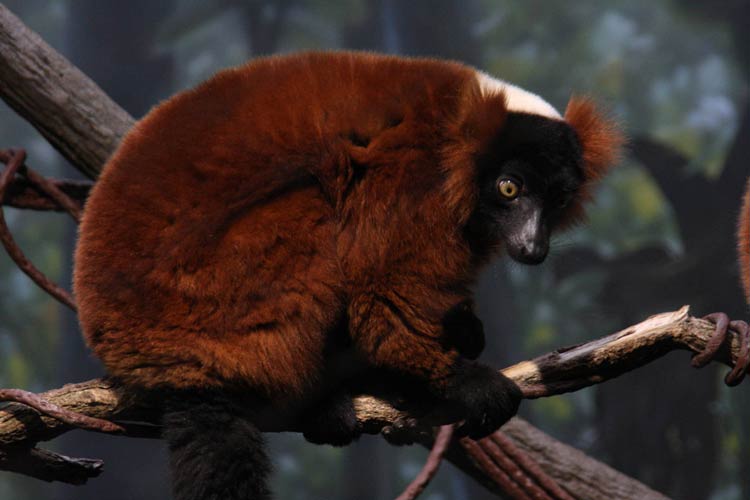
Population
Lemur populations have declined significantly in recent years, largely due to habitat loss and fragmentation, hunting, and the introduction of invasive species. According to the International Union for Conservation of Nature (IUCN), 105 out of 111 known lemur species are considered to be at risk of extinction. Here are some examples of the population status of different lemur species:
- Greater bamboo lemur (Prolemur simus)
Critically endangered. Population estimated to be fewer than 250 individuals. - Indri (Indri indri)
Endangered. Population estimated to be fewer than 10,000 individuals. - Ring-tailed lemur (Lemur catta)
Endangered. Population estimated to have declined by more than 50% over the past 30 years. - Black-and-white ruffed lemur (Varecia variegata)
Critically endangered. Population estimated to have declined by more than 80% over the past 27 years. - Silky sifaka (Propithecus candidus)
Critically endangered. Population estimated to be fewer than 250 individuals.
These are just a few examples of the population status of different lemur species. The decline of lemur populations is a major concern for conservationists and highlights the urgent need for increased efforts to protect and conserve these unique primates.

The latest update of The IUCN Red
The latest update of The IUCN Red List of Threatened SpeciesTM has revealed that almost a third of all lemur species in Madagascar are now Critically Endangered, with 98% of them threatened. In total, 33 lemur species are now Critically Endangered, with 103 of the 107 surviving species threatened with extinction due to deforestation and hunting in Madagascar.
Thirteen lemur species have been pushed to higher threat categories due to intensifying human pressures, including Verreaux’s Sifaka and Madame Berthe’s Mouse Lemur. Other African primates are also under threat, with an estimated 53% of primate species (54 of 103) under threat of extinction. This includes all 17 species of Red Colobus, making it the continent’s most threatened genus of monkeys. The primary causes of these threats are hunting for bushmeat and habitat loss.
The IUCN Red List now includes assessments of over 120,000 species, with 32,441 of them threatened with extinction. Dr. Grethel Aguilar, IUCN Acting Director General, stressed the urgent need for alternative, sustainable livelihoods to replace the current reliance on deforestation and unsustainable use of wildlife. She emphasized the need for an ambitious post-2020 biodiversity framework that drives effective conservation action.
Dr. Jane Smart, Global Director of the IUCN Biodiversity Conservation Group, stated that the world needs to act fast to halt species’ population declines and prevent human-driven extinctions, with an ambitious post-2020 biodiversity framework that the upcoming IUCN Congress will help define. Russ Mittermeier, Chair of the IUCN Species Survival Commission Primate Specialist Group, explained that although the situation remains very serious for the majority of lemur species, investments in the IUCN Save Our Species Lemur Initiative have helped local organizations create new community-based protected areas, patrol and re-forest, and raise awareness in schools and local communities on the need to protect lemurs.
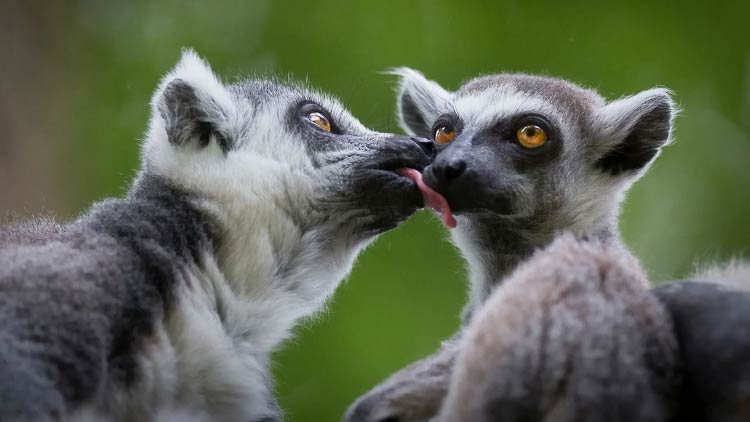
Status and conservation
The latest update of The IUCN Red List of Threatened Species has revealed that almost one-third (31%) of all lemur species in Madagascar are now Critically Endangered, just one step away from extinction, with 98% of them threatened. The report completed a revision of all African primate assessments, concluding that over half of all primate species in the rest of Africa are under threat. The IUCN Red List now includes over 120,000 species, with 32,441 species threatened with extinction.
Dr Grethel Aguilar, IUCN Acting Director General, says “At the heart of this crisis is a dire need for alternative, sustainable livelihoods to replace the current reliance on deforestation and unsustainable use of wildlife. These findings really bring home the urgent need for an ambitious post-2020 biodiversity framework that drives effective conservation action.” Deforestation and hunting in Madagascar are the main reasons for the decline of lemurs, and 13 species have been moved to higher threat categories due to intensifying human pressures. Elsewhere in Africa, an estimated 53% of primate species are under threat of extinction, with hunting for bushmeat and habitat loss the main issues.

Lemurs in numbers / dimensions
The various lemur species found in Madagascar vary greatly in size, weight, and other physical characteristics. Here are some examples of the dimensions and other features of several lemur species:
- Indri
The indri is the largest living lemur, with a body length of around 60-70 cm (24-28 in) and a weight of 6-9 kg (13-20 lb). They have black and white fur, with a distinctive face and a small tail. Indris can live up to 20-25 years in the wild. - Ring-tailed lemur
The ring-tailed lemur is one of the most recognizable lemur species, known for its distinctive black and white striped tail. They have a body length of around 40-45 cm (16-18 in) and weigh 2-3 kg (4.4-6.6 lb). Ring-tailed lemurs can live up to 16-19 years in the wild. - Mouse lemur
The mouse lemur is the smallest lemur species, with a body length of around 10-15 cm (4-6 in) and a weight of only 30-50 g (1-2 oz). They are nocturnal and have large eyes to help them see in the dark. Mouse lemurs can live up to 5-7 years in the wild. - Sifaka
The sifaka is known for its distinctive way of moving, with long leaps between trees. They have a body length of around 40-55 cm (16-22 in) and a weight of 3-6 kg (6.6-13.2 lb). Sifakas can live up to 18-20 years in the wild.
It’s worth noting that these are just a few examples of the many different lemur species found in Madagascar, and each species has its own unique physical characteristics and life expectancy.
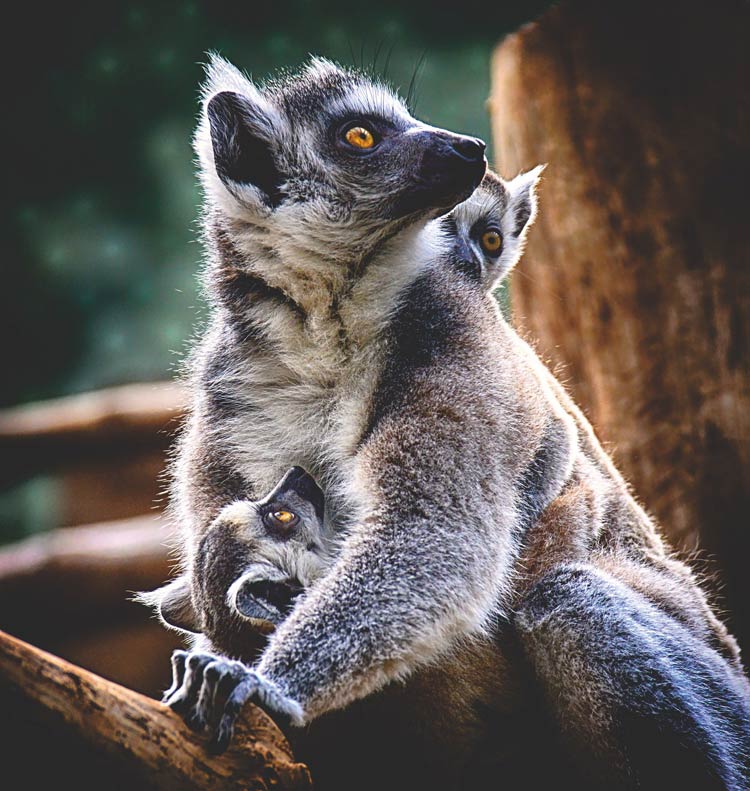
Lemurs in culture
Lemurs have played important cultural roles in the lives of the Malagasy people of Madagascar, where they are found. In the traditional beliefs of the Malagasy, lemurs are considered sacred animals, and are believed to have the ability to communicate with their ancestors. Some species of lemurs are also associated with particular tribes or clans and are considered to be totems, or symbols of the tribe.
The lemurs’ unique and unusual characteristics have also captured the imagination of people around the world, making them popular subjects in literature, film, and other media. For example, the lemur character King Julien from the animated movie Madagascar and its sequels has become a beloved pop culture icon.
In addition, the unique biodiversity of Madagascar and the importance of conserving lemurs and their habitats have been widely recognized, leading to various conservation and education initiatives. The government of Madagascar has designated October 30 as National Lemur Day, to raise awareness and promote conservation efforts for these endangered animals.
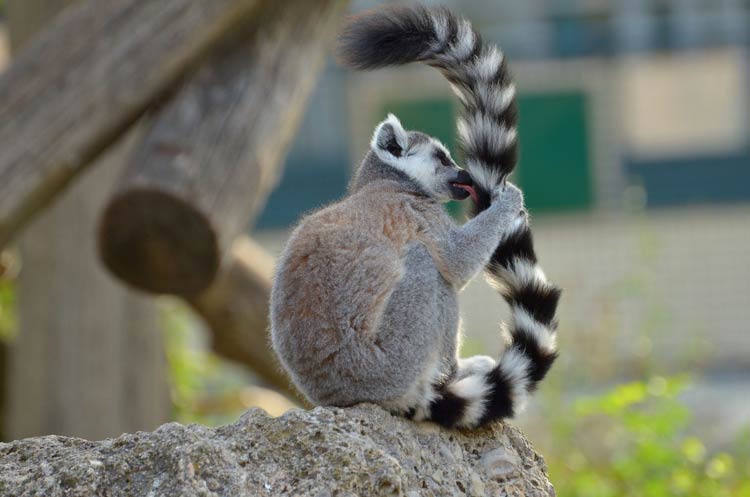
Lemurs in movies
Lemurs have appeared in several movies and television shows over the years. One of the most popular movies featuring lemurs is the animated film “Madagascar” and its sequels, which feature a group of lemurs as main characters. The film has brought attention to lemurs and their unique characteristics, although it has been criticized for its inaccurate portrayal of the animals.
Another movie that features lemurs is the IMAX film “Island of Lemurs: Madagascar,” which focuses on the conservation efforts to protect lemurs and their habitats in Madagascar. The film showcases the diverse species of lemurs and their behavior, as well as the challenges they face in the wild.
Lemurs have also appeared in several nature documentaries, such as the BBC series “Planet Earth” and “Nature” on PBS. These documentaries provide an in-depth look at lemurs in their natural habitats, including their behavior, social interactions, and the threats they face.
Overall, the appearance of lemurs in popular media has helped raise awareness about these unique primates and their conservation status. However, it is important to ensure that accurate and respectful portrayals are used to educate the public about lemurs and their role in the ecosystem.
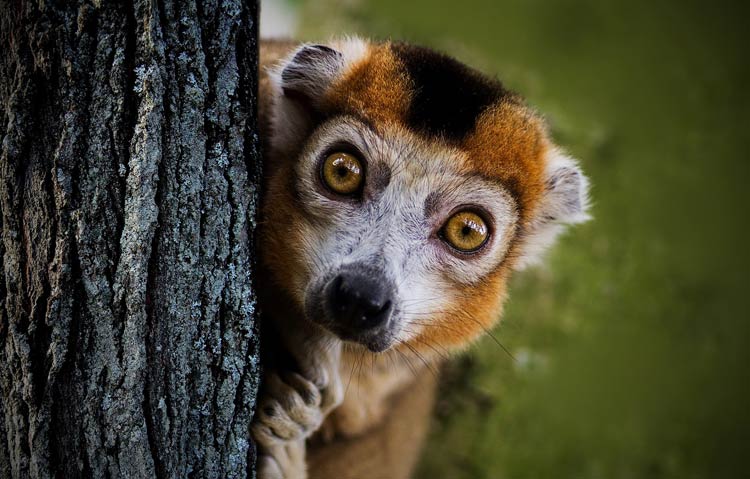
Interesting facts about Lemurs
- Lemurs are only found on the island of Madagascar, located off the coast of Africa.
- Lemurs are primates, but they are not monkeys. They belong to their own unique group of primates known as prosimians.
- There are over 100 species of lemurs, ranging in size from the tiny mouse lemur (weighing just 30 grams) to the large indri lemur (weighing up to 9 kg).
- Lemurs have many unique adaptations, including their long, pointed snouts and their grooming claws on their second toes.
- Many lemur species are nocturnal, meaning they are active at night, while others are diurnal, meaning they are active during the day.
- Some lemur species, such as the aye-aye, have elongated fingers that they use to extract insects from tree bark.
- Lemurs are social animals and live in groups called troops.
- The ring-tailed lemur is perhaps the most well-known lemur species, thanks in part to its distinctive striped tail and appearances in movies and TV shows.
- The word “lemur” comes from the Latin word for “ghost” or “spirit,” which refers to the lemur’s nocturnal habits and eerie vocalizations.
- Many lemur species are endangered due to habitat loss, hunting, and the illegal pet trade, and conservation efforts are underway to protect these unique primates.
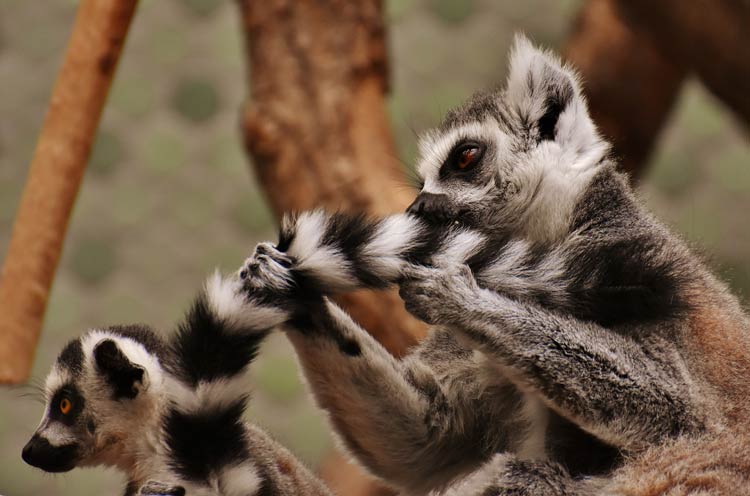
Q&A (questions and answers) about Lemurs
Q: What are lemurs?
A: Lemurs are primates native to the island of Madagascar off the southeastern coast of Africa.
Q: How many species of lemurs are there?
A: There are around 100 species of lemurs.
Q: What do lemurs eat?
A: Lemurs are omnivores and their diet varies depending on the species, but it generally includes fruit, leaves, flowers, insects, and small animals.
Q: What is the size of a lemur?
A: The size of a lemur varies depending on the species. The smallest lemur, Madame Berthe’s mouse lemur, is about the size of a mouse and weighs only 30 grams, while the largest lemur, the indri, can weigh up to 9 kilograms.
Q: Where do lemurs live?
A: Lemurs are found only on the island of Madagascar and some nearby smaller islands.
Q: Are lemurs endangered?
A: Yes, lemurs are endangered. Almost all species of lemurs are threatened with extinction due to habitat loss, hunting, and other factors.
Q: Are lemurs social animals?
A: Yes, most species of lemurs are social and live in groups called troops.
Q: Do lemurs use tools?
A: Yes, some species of lemurs use tools, such as the use of twigs to extract insects from tree bark.
Q: Can lemurs swim?
A: Yes, some species of lemurs are good swimmers and can swim short distances to cross rivers and streams.
Q: Do lemurs hibernate?
A: No, lemurs do not hibernate. However, some species enter a state of torpor during the dry season when food is scarce.
